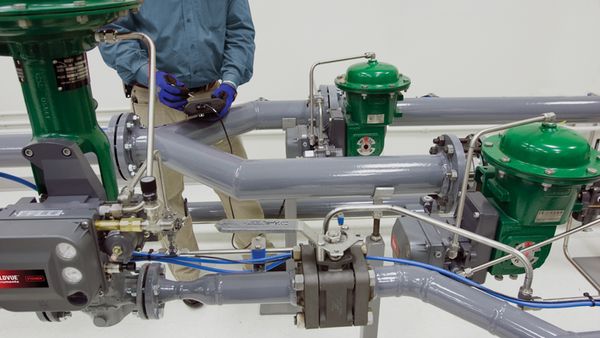Table of Contents
Control valve positioners are critical components in any process control system, as they ensure precise control of fluid flow through pipelines. To ensure the reliability and efficiency of process control systems, it is important to perform functional testing of control valve positioners. In this article, we will discuss the importance of functional testing, the types of tests performed, and the steps involved in conducting the tests.
Importance of Functional Testing of Control Valve Positioners
Functional testing of control valve positioners is essential to ensure that they are operating efficiently and accurately. A malfunctioning valve can result in inefficient process control, which can cause safety hazards and production losses. Moreover, it is important to ensure that the valve is properly calibrated and its response time is within acceptable limits.
Types of Tests Performed
There are several types of tests performed on control valve positioners to ensure their proper functioning. These tests include:
Calibration Test
Calibration test is performed to check whether the valve positioner is properly calibrated. This test involves adjusting the valve positioner to a setpoint and verifying the valve’s actual position. If the valve position is not within an acceptable range, adjustments are made to the positioner until the desired position is achieved.
Response Test
Response test is performed to check the response time of the valve positioner. This test involves moving the valve from one position to another and measuring the time it takes to reach the desired position. If the response time is not within acceptable limits, adjustments are made to the positioner.
Hysteresis Test
Hysteresis test is performed to check the difference in the valve position when the valve is approached from the same direction but at different setpoints. This test helps identify any issues related to hysteresis, which can result in valve instability.
Deadband Test
Deadband test is performed to check the difference between the setpoint and the actual position of the valve when no change in the signal is detected. This test helps identify any issues related to deadband, which can result in over-controlling or under-controlling of the process.
Steps Involved in Conducting Functional Testing





Conducting functional testing of control valve positioners involves several steps, which include:
Step 1: Preparation
The first step involves preparing the control valve positioner for testing. This includes checking for any physical damages, ensuring proper electrical connections, and verifying that the valve is properly mounted.
Step 2: Calibration Test
The calibration test is performed to ensure that the valve positioner is properly calibrated. This involves setting the valve to a specific position and measuring the actual position using a position sensor.
Step 3: Response Test
The response test is performed to measure the response time of the valve positioner. This involves moving the valve from one position to another and measuring the time it takes to reach the desired position.
Step 4: Hysteresis Test
The hysteresis test is performed to identify any issues related to hysteresis, which can result in valve instability. This involves moving the valve to a specific position from two different setpoints and measuring the difference in the valve position.
Step 5: Deadband Test
The deadband test is performed to identify any issues related to deadband, which can result in over-controlling or under-controlling of the process. This involves setting the valve to a specific position and measuring the difference between the setpoint and the actual position when no change in the signal is detected.
Conclusion
Functional testing of control valve positioners is essential to ensure efficient and reliable process control. The different types of tests performed, including calibration, response, hysteresis, and deadband, help identify any issues related
- Pneumatic Control Valve Positioner Principle
- Smart Positioners
- Valve Positioner
- Control Valve Maintenance | Extended stem valve | Samson C/V
